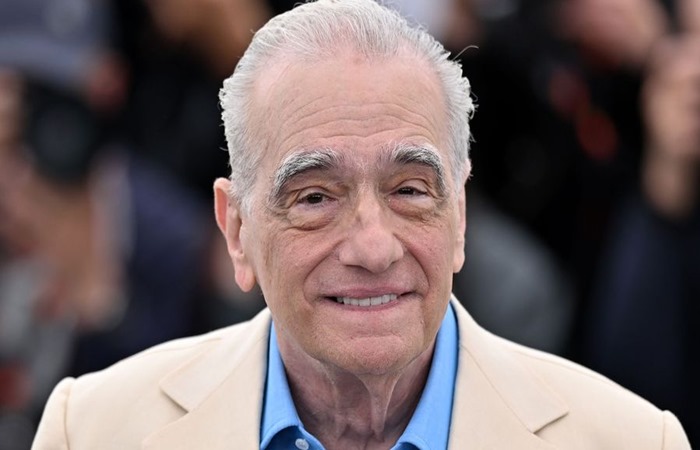
Martin Scorsese: A Journey through the World of Cinema.
Professions: Actor, Director, Executive Producer
Birth Name: Martin Charles Scorsese
Nationality: American
Birth Date: November 17, 1942
Birthplace: Queens, New York City, New York, USA
Martin Scorsese Biography:
Martin Scorsese’s remarkable journey in the world of cinema began in the vibrant neighborhood of Little Italy, New York. Despite suffering from asthma during his youth, he developed a deep love for the movies. Initially aspiring to be a painter and even considering a path as a priest, he eventually pursued his passion for film, studying at New York University and directing his first short films.
In 1965, Scorsese embarked on his feature film debut, “Who’s That Knocking at My Door?” starring Harvey Keitel in the lead role. However, this project took four years to complete. During this time, he faced setbacks when he was fired from the production of “The Honeymoon Killers” after just a week, leading him to take on editing work. It was then that he caught the attention of Roger Corman, who provided the funding for his second feature film, “Boxcar Bertha” (1972). Unhappy with the constraints imposed by the producer, Scorsese sought to return to more personal filmmaking and secured the funds for “Mean Streets” (1973). This film marked the beginning of his enduring collaboration with Robert De Niro and established Scorsese as one of the most promising directors of his generation.
Scorsese’s versatility as a filmmaker shone through as he explored diverse subjects. “Alice Doesn’t Live Here Anymore” (1974) showcased his ability to adapt to various genres, and Ellen Burstyn’s performance earned her an Academy Award for Best Actress. In 1976, Scorsese made a significant impact at the Cannes Film Festival with “Taxi Driver,” a gripping tale of a Vietnam veteran obsessed with the grimy streets of New York City, which won the Palme d’Or.
However, the late 1970s brought challenging times for Scorsese, marked by the tumultuous production of “New York, New York” (1977), which left him in a state of depression. Struggling with drug abuse, he almost reached the brink of suicide before recovering. It was De Niro who suggested a redemption project, leading to the creation of “Raging Bull” (1980).
ALSO SEE: Ryan Lee Biography, Career, Age, Highlights and Net Worth
The 1980s proved to be a commercial challenge for Scorsese, leading him to experiment with comedy in films like “The King of Comedy” (1983) and “After Hours” (1985). He returned to more mainstream filmmaking with “The Color of Money” (1987) to secure the opportunity to bring to life his long-cherished project, “The Last Temptation of Christ,” a film that provoked controversy but showcased his dedication to his craft. Universal’s investment in this endeavor also led to “Cape Fear” (1991).
In the 1990s, Scorsese delved deep into the world of organized crime with two acclaimed films, “Goodfellas” (1990) and “Casino” (1995), offering searing portrayals of the American Dream’s pitfalls. These films featured unforgettable performances by Joe Pesci and Robert De Niro. He explored diverse themes, from a love drama in “The Age of Innocence” (1993) to a spiritual crisis in “Bringing Out the Dead” (1999), all set against the backdrop of his beloved New York City.
Scorsese’s collaboration with Leonardo DiCaprio commenced with “Gangs of New York” (2002), a grand historical epic set during the Civil War that depicted the clash between Americans and new immigrants. This partnership continued with “The Aviator” (2004), a biopic dedicated to the eccentric billionaire Howard Hughes, and the thrilling “The Departed” (2006), a remake of the Hong Kong film “Infernal Affairs.”
In the new decade, Scorsese took on the role of producer and director for the pilot of the series “Boardwalk Empire,” featuring Steve Buscemi. The show immersed viewers in the mafia world of Atlantic City during the 1920s, earning critical acclaim and awards. Meanwhile, in cinema, Scorsese reunited with Leonardo DiCaprio in “Shutter Island” (2010) and adapted the mysterious adventures of “Hugo Cabret” (2011).
SEE ALSO: Rebeca Barreto Biography, Career, Age, Education and Net Worth
Scorsese’s profound love for “rock’n’roll,” “classic rock,” and “blues” is evident in his work, with these musical genres playing an integral role in his films. He directed and produced documentaries and concerts, including Michael Jackson in 1987, Eric Clapton in “Nothing But the Blues” (1995), Bob Dylan in “No Direction Home” (2005), the Rolling Stones in “Shine a Light” (2008), and George Harrison in “Living in the Material World” (2011).
In 2013, Scorsese released “The Wolf of Wall Street,” an adaptation of the book by former stockbroker Jordan Belfort. Leonardo DiCaprio starred, marking their fifth collaboration. Four years later, he fulfilled his dream by adapting Shusaku Endo’s novel, “Silence,” set in 17th-century Japan, a tale of two Jesuit priests on a mission in a hostile land.
In 2019, Scorsese directed “The Irishman” for Netflix, exploring the mysterious disappearance of legendary union leader Jimmy Hoffa. The film reunited Robert De Niro, Al Pacino, and Joe Pesci.
In 2023, at the age of 80, Martin Scorsese once again joined forces with Leonardo DiCaprio and Robert De Niro for “Killers of the Flower Moon,” a historical epic shedding light on a dark chapter in American history—the series of murders of the Osage Native tribe in 1920s Oklahoma.











